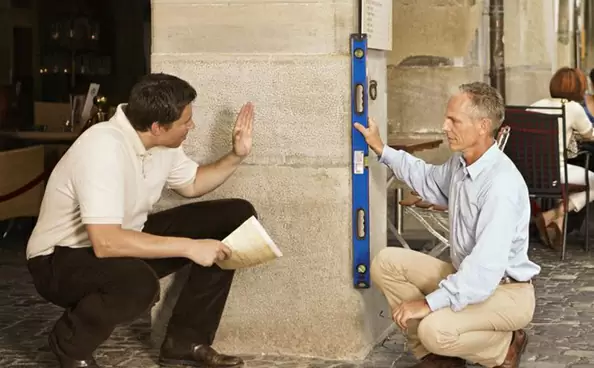
22.03 2022
Buildings of high historical and cultural value are subject to natural aging and destruction. At the same time, restoration, restoration or reconstruction of national and world heritage sites must be carried out with minimal damage to the structures, whether it is repairing walls and floors, or raising and strengthening the foundation. It is possible to minimize damage to historical buildings using Georesin geopolymer technologies.
Mansions and palaces, castles and fortresses, churches and temples, as well as many other historical objects are gradually aging and falling into disrepair. Continuously changing factors of the external environment – pressure, temperature, humidity and air pollution – have a negative impact on the condition of the walls, roofs and ceilings of buildings.
No less dangerous for historical objects can be a change in the characteristics of the soil on which the structure is built. Thus, the weakening of the base soil can cause subsidence of the floor of the first floor or affect the stability of the foundation, and therefore other structural elements of the building.
The subsidence of the foundations and floors of historical objects due to the weakening of the soil often provokes the appearance of cracks in the floor and walls of the building. A simple cosmetic repair of the walls and floor in such cases does not save the situation, because it does not eliminate the cause of the appearance of cracks. Therefore, if you do not intervene in the condition of the soil and do not raise the foundation or sections of the floor to the design level, not only the deterioration of the emergency situation, but also the complete destruction of the architectural monument is possible.
Although objects of cultural and historical heritage are often restored using the most modern construction technologies and materials, the issue of raising the floor and strengthening the foundation of historical buildings is often solved by traditional methods. However, the use of traditional technologies of strengthening the soil and lifting the foundation with the involvement of heavy construction equipment and conducting concrete and earthworks can lead to damage to the historical or cultural value of the object.
To eliminate cracks in the floor and walls, as well as to strengthen the soil and raise the foundation or the floor of the architectural monument, it is much more effective to use injection technologies with GeoResin geopolymer resins. Their use will allow not only to do without damage to the historical and cultural value of the object, but also to significantly reduce the budget for repair and restoration procedures.
Two GeoResin geopolymer injection methods – Deep Stabilization і Slab Lifting – can be used to strengthen the base soil under the foundation of the historical object, as well as to eliminate subsidence of the floor and foundation. In the first case, a multi-component geopolymer material to strengthen the soil and raise the foundation is injected to a considerable depth into the soil of the base of the structure, and in the second – geopolymers are introduced to eliminate subsidence directly under the floor of the first floor.
Injection with geopolymers is carried out through special tubes with a diameter of 12-16 mm, which are inserted into wells drilled in the floor of the first floor or in the surface along the perimeter of the building. The diameter of the wells can be from 12 mm to 32 mm. It is not necessary to carry out other technological damage to the object. The equipment for injecting geopolymer resins is compact and mobile. Its competent use does not affect the historical or cultural value of the object. Drilled technological holes for injection are easy to close.
All restorative procedures using GeoResin geopolymer resins, be it strengthening the soil, strengthening and raising the foundation, or eliminating floor subsidence, are performed extremely quickly. After injection, the geopolymer material expands, fills all cavities in the soil and hardens within just 15 minutes, forming vertically directed pressure. At the same time, the degree of elevation of the foundation and floor is monitored in real time using laser levels.
